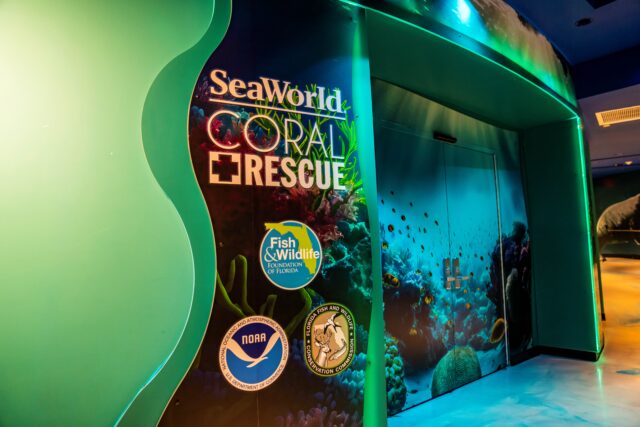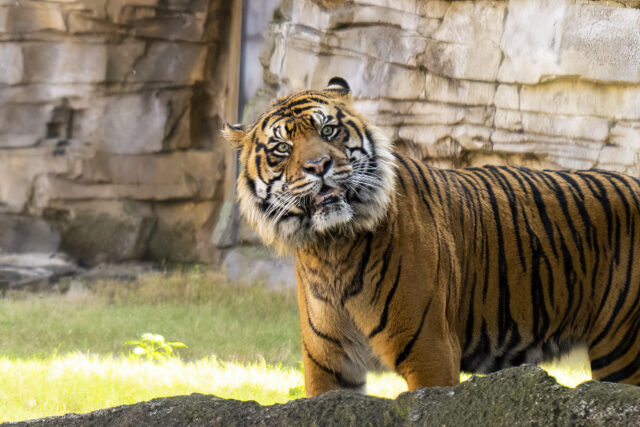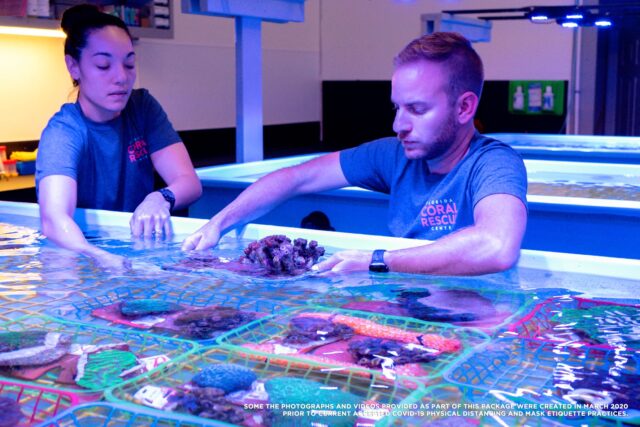Ten-Year Research Project Reveals Social Patterns with Widespread Implications
Dolphin relationships can provide insights into population health, foraging and reproductive success, gene flow and even the cultural transfer of knowledge such as interacting with harmful fishing gear. Results of a new study published this month in the Journal of Mammalogy indicated that some relationships established by common bottlenose dolphin calves are maintained into their juvenile stages.
Scientists from Hubbs-SeaWorld Research Institute (HSWRI) and the Cornell University College of Veterinary Medicine relied on images gathered during photo-identification surveys to track dolphins (Tursiops truncatus) over time by unique markings on their dorsal fins. A total of 242 boat-based surveys enabled analysis of 2,800 dolphin sightings from the Florida’s northern Indian River Lagoon and Halifax River.
The results documented the lasting impacts of dolphin relationships and family ties in their development from calves to juveniles. Scientists used social network analysis to investigate social structures within dolphin communities, as well as statistical analyses.
“We found clear evidence that the majority of associations that were established when the dolphins were calves were maintained as they matured into juveniles,” said Wendy Noke Durden, HSWRI Research Scientist II. “Previously, the research dedicated to dolphin associations in this transition period was limited.”
Juveniles also preferentially associated with siblings and maintained those ties.
“Dolphins that associated as calves were significantly more likely to spend time together as juveniles and to form close bonds. The majority of juveniles maintained a connection with their mothers, and in a few cases, their mothers remained their favoured companions”, said Michelle Greenfield, DVM candidate, Cornell University.
These data could advance understanding of how dolphin communities are shaped and their importance for individuals.
“This decade-long study and its findings are sure to open opportunities to further the conservation and protection of common bottlenose dolphins in the Indian River Lagoon and adjacent water bodies,” concluded Durden.
Funding was provided by the SeaWorld Busch Gardens Conservation Fund, Discover Florida’s Oceans specialty license plate, HSWRI, and Cornell University College of Veterinary Medicine - Howard E. Evans Award in Comparative Anatomy. The researchers are also grateful for the countless volunteers and interns who contributed to data collection and management, Cornell University Statistical Consulting Unit for their expertise with statistical analysis, and colleagues at Volusia County Environmental Management for critical field assistance.
About Hubbs-SeaWorld Research Institute (HSWRI)
HSWRI is a not-for-profit, 501(c)(3) research organization founded in 1963 “to return to the sea some measure of the benefits derived from it.” With a long-standing legacy of pioneering marine science that increases understanding of animals and their ecosystems, it enjoys international renown for its work. Its areas of inquiry are ecology, physiology, bioacoustics and aquaculture. Through science, the application of advanced technologies and the expansion of knowledge, the Institute provides effective solutions to conflicts that arise between human activity and the natural world. Hubbs-SeaWorld scientists apply sophisticated technologies to seek the solutions that protect and conserve marine animals while benefiting humans and their reliance on marine resources. Based in San Diego with facilities in Orlando, FL and Carlsbad, CA, HSWRI’s unique contributions are due in part to access to SeaWorld’s extensive marine zoological collection, a close association with local universities and highly respected scientific staff. For more information, visit www.hswri.org.
About Cornell University College of Veterinary Medicine
The College of Veterinary Medicine (CVM) at Cornell University is recognized internationally as a leader in animal medicine, public health, biomedical research and veterinary medical education. Ranked as one of the top veterinary colleges in the nation by US News & World Report consistently since 2000, the College will continue to excel in providing education through its cutting-edge case-based curriculum and advanced training that prepare veterinarians and scientists to serve society in critical roles in clinical and diagnostic veterinary medicine, public health, scientific inquiry and public policy.
Back to news



